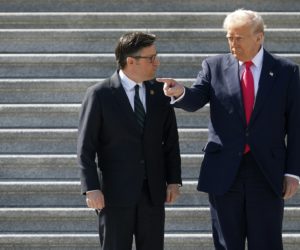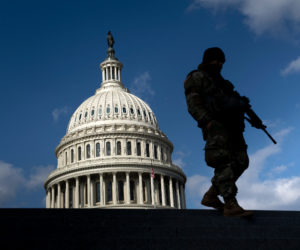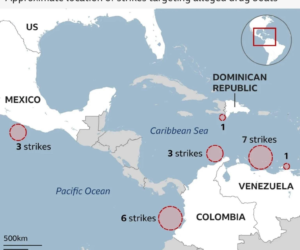
In many election cycles, it’s not unusual to see a friendly tug of war between leaders of the House and Senate urging their members to both stay and go. The House contingent tries to talk members of their party out of making Senate bids or seeking their state’s Governorships. The fear is that by quitting the House to go higher, they would be leaving their House seats vulnerable to takeover by the other party. Open seats are notoriously harder to defend than those that see incumbents running again and while there’s no guarantee that the incumbents in question will win re-election, their odds jump up dramatically should they decide to stay.
I can remember several cycles of one chambers leaders butting heads with the other but the year that most stands out was 1999 (when both parties were in preparation for the 2000 cycle) and in that case, it involved the Democrats trying to bargain with their members. This was just after Democrats had defied expectations by picking up five House seats amid the Clinton-Lewinsky scandal in the ‘98 midterms and party leaders were suddenly energized about gaining the six remaining seats needed to end the GOP majority. The problem was that some viewed the Senate as in reach for Democrats as well and no less than a dozen members made clear that they were seriously flirting with running for the upper chamber. Many were encouraged by the man who stood most to gain, Tom Daschle of South Dakota, who would become Majority Leader if Democrats ousted a group that included aging veterans and vulnerable freshman who were facing the voters for the first time since capturing their seats in the Republican friendly 1994. Some were expected to lose.
Because many of the members contemplating Senate bids represented seats that were safely Democratic, not every seat would have been at risk of falling even if everyone had thrown their hats into the Senate ring. Frank Pallone of New Jersey and Nita Lowey of New York were among this group. But a fair number, among them Ted Strickland of Ohio, and two Minnesota twins named David Minge and Colin Peterson did hold seats that would have been very difficult for Democrats to hold if open. House Democrats, led by would-be speaker Dick Gephardt, put on a full court press to get members to stay put. Gephardt even attended a press conference of one such member, New Jersey’s Bob Menendez, a member in a safe seat, when he announced that he would not be running (the rationale was that he’d be in line for a leadership post should Ds win the majority).
In the end, only three Democratic House members went their own way – Ron Klink of Pennsylvania, Debbie Stabenow of Michigan and Bob Weygand of Rhode Island (Stabenow was successful). Another member, Bob Wise of West Virginia, went for the Governorship and was elected. Lowey and Pallone ultimately didn’t try to compete with the star and money power of Hillary Clinton and Jon Corzine. But the efforts of house Democrats to keep their members proved well founded. In the end, Democrats lost three of the four seats (only Weygand’s went to another Democrat).
At the end of the day, House Democrats had a net gain of two seats but were frustratingly still four short of a majority. But the likelihood is that if the three had stayed, the money that had to be spent on the unsuccessful effort to hold their seats could have gone to another closely contested race. And that would have delivered Democrats their House majority, even if it would have been by the narrowest of margins. Meanwhile, Senate Democrats moved into a 50-50 split with the Republicans, which opened the door to the majority five months later when Vermont Republican Jim Jeffords famously left the party to caucus with the Democrats.
Fast forward to 2017. A number of Republicans are or have been mulling over challenges to the many Democratic Senators facing re-election. House Republicans can sense that if Trump is as unpopular as he is today, holding those seats, if open, could be a challenge and true to form, leaders are hard at work trying to keep them in the House. There is some evidence they are succeeding.
Kevin Yoder holds a suburban Kansas City seat that gave Hillary Clinton a plurality last year. He had been mulling a run for Governor and in this environment, the GOP would have yuge problems holding the seat. But Yoder recently took his name out of the running. Pat Meehan seriously toyed with the idea of taking on Democratic Senator Bob Casey in Pennsylvania. His odds would have been fairly poor – similar to the GOP holding his seat if he left (Clinton narrowly carried the district). And Wisconsin’s Sean Duffy represents an area that has trended more toward his party, but is still not safe in a crazy environment by any means. He had been seriously mulling a challenge to first-term Senator Tammy Baldwin but he too, opted to stay put.
Will Republicans have the same luck with other members? The seat of Ohio Congressman Jim Renacci could be up for grabs should he depart to make a risky bid for Governor (though personally wealthy, Renacci would likely be facing three statewide officials in the primary). Fred Upton has held his Kalamazoo anchored seat since 1986 and, having seen his prized Commerce chairmanship go kaput due to term limits, has made some noise about challenging Senator Debbie Stabenow. House Republicans clearly hope he does not.Senate Republicans have long viewed Congresswoman Ann Wagner as a top contender to take on Senator Claire McCaskill but she has appeared reticent of late. At least a trio of Republican House members – Indiana’s Luke Messer, North Dakota’s Kevin Cramer and West Virginia’s Evan Jenkins, appear poised to take on Senators Joe Donnelly, Heidi Heitkamp and Joe Manchin respectively, but GOP worries about holding their seats are close to non-existent.
Numerically, neither the Democrats in 1994 nor the GOP in 2006 would not have held the House had every member who sought higher office stayed put. In fact, given the marginal areas many of the departees represented, most if not all would have probably been lost. But that wouldn’t have been known until the day of and until then, most of those members would have had at least a fighting chance.
















